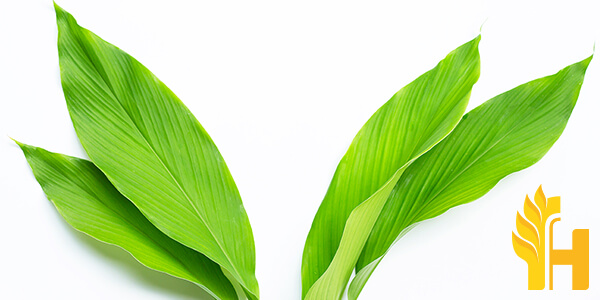Curry Leaf price

Where to buy and sell Curry Leaf, lowest (cheapest) and highest price.
check offers buy sell Curry LeafToday price for Curry LeafCurry Leaf wholesale prices 2022
The Current commodity price of Curry Leaf per kg, pound in the world in the global markets
Curry Leaf
Curry leaf (Murraya koenigii) trees grow up to 15 feet tall and produce yellow, white or red flowers. They are found in tropical locations such as Florida, Hawaii and Southern California. The leaves, which have a strong flavor similar to oregano or curry powder, are used dried or fresh in traditional Indian dishes such as kormas and curries. The leaves are also used in some teas.There are several varieties of curry leaf trees, including ones that have yellow-green leaves and others with red flowers. Curry leaf trees grow best in U.S. Department of Agriculture plant hardiness zones 10 through 12, where average annual high temperatures range from 70 to 95 degrees Fahrenheit. In cooler climates, curry leaf plants can be grown indoors in containers.
Curry leaf trees are native to India and Southeast Asia, but they grow best in hot climates with long warm seasons. When planted in cool climates, the plants do not produce many leaves. The plants also need well-draining soil and average rainfall, similar to other tropical plants such as hibiscus.
Curry leaf trees must be watered regularly and should not be allowed to dry out between waterings, as this can damage the plant's roots and inhibit growth. The plants also need an inch of mulch around their bases each year to retain moisture and protect from weeds.
If flowering curry leaf tree bonsai are grown indoors, the plants should be placed near a southeast- or south-facing window. The ideal indoor temperature for curry leaf bonsai is 65 to 90 degrees Fahrenheit. A humidity tray filled with pebbles and water can help increase humidity around the plant's leaves. Curry leaf trees need six hours of full sun per day to produce leaves year-round.
Caring for a curry leaf bonsai indoors requires frequent fertilization every month during the spring and summer growing seasons. Reduce or stop watering in the winter, allowing the soil to dry out between waterings.
Curry leaf bonsai trees should be repotted every two or three years, using an all-purpose potting mix. Fertilize curry leaf plants before their normal fertilization cycle begins in the spring by applying a 10-10-10 NPK fertilizer diluted to one-third strength. Apply this once each month until September at the rate of 3 to 4 tablespoons per square yard.
The leaves of curry leaf bonsai trees are normally green but can turn yellow or brown during periods of drought, cold drafts or lower light levels indoors. Leaf color can also change if the plant is under-fertilized, is too hot or has old age. When these conditions occur, reduce the amount of fertilizer you give curry leaf plants to once per month.
Curry leaf bonsai trees should be pinched back to encourage branching when they are young to develop a bushier plant that will produce more leaves. Pinching stimulates growth hormones in the plant and makes it form multiple branches.
Global curry leaf production
Curry leaf is an important ingredient in many cuisines, especially in South Asian, Thai, and Chinese dishes. The leaves add a unique flavor and aroma to food and are also used as a natural food colorant. Curry leaf is native to India and Sri Lanka, but it is now grown in many other countries around the world, including Thailand, China, Vietnam, and Malaysia. In 2018, the global production of curry leaves was estimated at about 18 thousand metric tons. The majority of curry leaf production takes place in India, where the herb is an essential part of many traditional dishes. Other leading producers of curry leaves include Thailand, China, and Vietnam. In Thailand, curry leaves are used to add flavor and color to curries, soups, and stir-fries. In China, they are often used in braised dishes or as garnish. The curry leaf plant is a small evergreen shrub that grows to a height of about 3 meters. The leaves are dark green, and glossy, and have a distinct curry flavor. The plant flowers from October to November and the fruits ripen from December to January. The main use of curry leaves is as a flavoring agent in food. However, the leaves are also used for medicinal purposes. Curry leaves are known to have anti-diabetic, anti-inflammatory, and anti-bacterial properties. They are also used as a treatment for stomach disorders and diarrhea. The curry leaf plant is grown in tropical and subtropical regions of the world. It prefers well-drained, sandy soils and full sun exposure. Curry leaves can be propagated from seeds or cuttings. The leaves are picked when they are young and tender. They are then dried in the sun or air-dried. Once dry, the leaves can be stored in an airtight container for up to a year. Curry leaves can be used fresh, dried, or powdered. When using fresh leaves, they should be chopped finely before being added to dishes. Dried leaves can be reconstituted by soaking them in water for 10 minutes. Powdered curry leaves can be used as a seasoning in curries, soups, and stir-fries. They can also be used to make tea. To make curry leaf tea, add one teaspoon of powder to a cup of boiling water and steep for 5 minutes.Download our new
Husfarm App
Stay up to date with the current prieces of agricultural products all over the world.
Do you want to sell agricultural products?
Are you an Agricultural processor looking for high-quality products to buy?
Post an ad for FREE!
